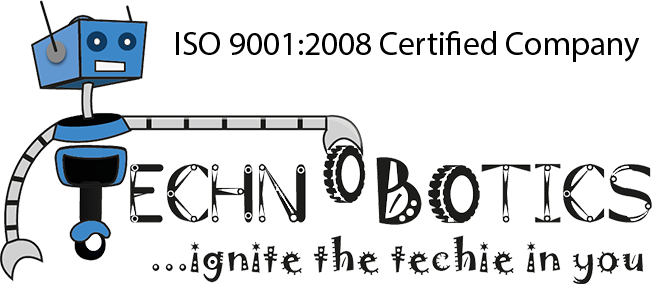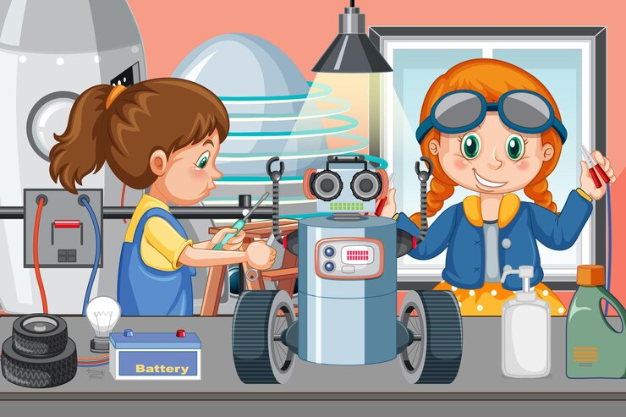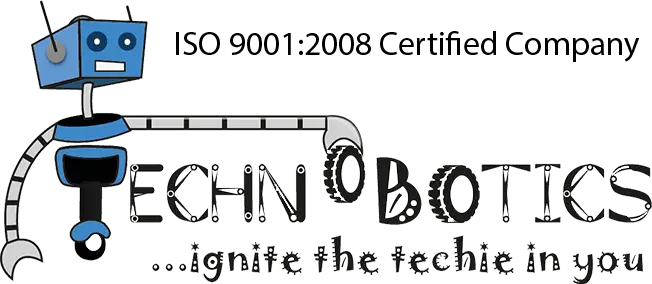The 21st century is characterized by a new era of scientific innovations and technological progress; therefore, the inclusion of robotics in the educational agenda is becoming increasingly important. School robotics curriculum is not only great for developing students’ STEM knowledge, but this technology also helps students become more creative, critical thinkers, and problem solvers. Implementation of robotics in schools at the initial stage might appear to be an intimidating task. Still, it can be a worthwhile project once the process is done with care and consideration.
How To Integrate School Robotics Curriculum?
- Evaluate Educational Objectives and Targets.
Before integrating the robotics curriculum, the school needs to be aware of where it wants to be in terms of education and what it wants to achieve. Specify the role of robotics in the curricula and outline the specific educational goals to be attained. Whatever the case may be, whether it is about STEM education, project-based learning, or innovative practices, well-defined objectives will help outline the entire process.
Finally, research robotics technologies and resources targeted for and affordable to the school. Consider scalability, ease of use, compatibility with existing technology, and the availability of educational materials when opting for a robotics curriculum.
- Develop a Budget and Acquire Fund.
After choosing a robotics platform you will use, you should create a budget covering hardware, software, training, and ongoing support. Pursue funding from grants, local business or community partners, and crowdsourcing projects. What most sponsors are interested in are the educational benefits of the robotics curriculum.
Therefore, while pitching for support for your initiative, you should play up the educational benefits of robotics. Also, highlight the importance of robotics career opportunities.
Organizing teachers’ training for them to stay up-to-date with the latest teaching methods and technology that will be integrated into the educational system of school robotics curriculum Trainers for the teachers to successfully integrate robotics is a must. Deliver professional development workshops and seminars to ensure instructors know robotics ideas, programming languages, and problem-solving methods. By allowing lifelong learning through the internet, webinars, and peer collaboration, teachers would be assured that they can effectively apply robotics in their classes.
- Prepare for the Robotics Space.
Mark the school premises with a spot where robotics activities and experiments can be carried out. Ensure there are enough workstations, storage for the kits and power sources for the robots. Think of the room’s design in a way that can be flexible regarding furniture arrangement to accommodate groups of different sizes and activities, creating an optimal learning space for students.
- Feedback Curriculum and Lesson Plans Creation
Associate with the educators to create a robotics curriculum that is part of the academic standards and teaching objectives. Design interactive lesson plans that combine robotics as a tool in different subject areas, including mathematics, science, technology, and even art. Integrate capabilities, challenges, and real-world projects to ignite students’ interest and create active engagement.
- Establish Robotics Clubs
Include robotics clubs and extracurricular activities in hands-on classroom learning to give students other areas for learning and teamwork. Organize competitions, hackathons, and shows to demonstrate students’ achievements and, as well, foster the spirit of friendly competition among participants. Provide opportunities for the student groups representing different communities to enter STEM fields.
- Importance Of Tracking Progress
Following the children’s progress frequently and evaluating robotics integration’s influence on academic performance and skill development is important. Soliciting the opinions of teachers, students, and parents will help you establish the areas of the robotics program that need further improvement and refinement. Track the engagement indicators, understanding of robotics concepts, and participation in STEM to assess the program’s impact.
- Develop and Strengthen Partnerships and Communities Engagement
Establish networks with local businesses, educational institutions, and STEM groups that will help expand the program’s reach and give students a better picture of what it takes to succeed in the field through hands-on learning and mentorships. Cooperate with nearby organizations by sponsoring events, hosting internships, or providing guest speakers to increase students’ knowledge about STEM careers and gateways.
- Highlight Achievements and Reward Success
Encourage students to show their activities in the robotics curriculum through exhibitions, awards ceremonies, or media coverage. Bring projects and achievements into the community, initially showing how robotics education improves student learning and skill enhancement. With this, you foster the thinking that robotics integration is what counts and thus leads to more people joining and pushing the boundaries.
5 Major Fields of Robotics
There’s a myriad of fields within robotics, each with its allure and purpose:
Industrial Robotics: Think of factory robots performing welding, painting, and assembly tasks.
Service Robotics: These robots are found in hospitals, homes, and businesses, taking care of cleaning, delivery, and customer service.
Medical Robotics: Hospital robots aid in surgery, prosthetics, and rehabilitation tasks.
Agricultural Robotics: Used in farming for planting, harvesting, and weeding.
Aerospace Robotics: These delved into space exploration and other aerospace applications.
Best Robotics Field
The best field in robotics varies based on your child’s interests and skills. Encouraging their passion is key—whether they’re into animals (hello, medical robots!) or fascinated by space exploration (cue aerospace robotics).
Robotics Courses in Mumbai
In Mumbai, there’s a fantastic array of robotics courses catering to different ages and skill levels:
Technobotics: Offers a wide range of courses from beginner to advanced levels, including summer camps and workshops.
RFL Academy: They start as young as four and provide coding and IoT courses.
STEM ART LAB: This place covers robotics, AI, coding, and more, alongside camps and workshops.
Bottom Line
Finally, integrating robotics into schools implies a thoughtful plan, sufficient resources, and continuous support. Thus, this step-by-step guide will help educators integrate robotics into their curriculum, making students’ education more relevant so that they will be confident and ready for the future characterized by technology. By utilizing students’ hands-on experiences, teamwork, and imagination, robotics education, as given at Technobotics, promotes future innovators, problem-solvers, and leaders in the STEM field.


